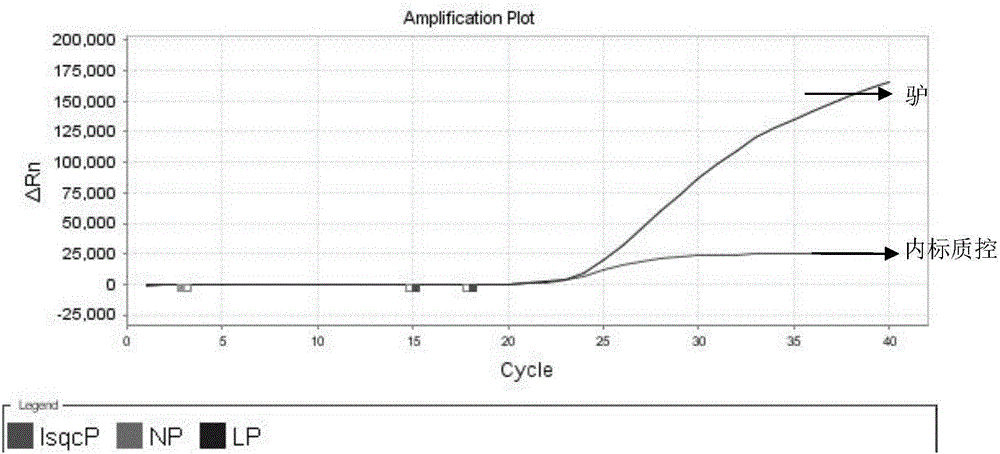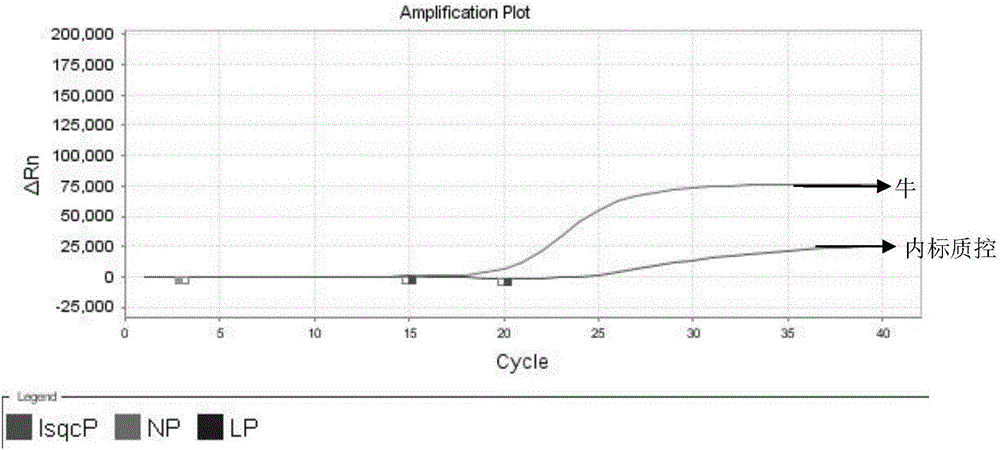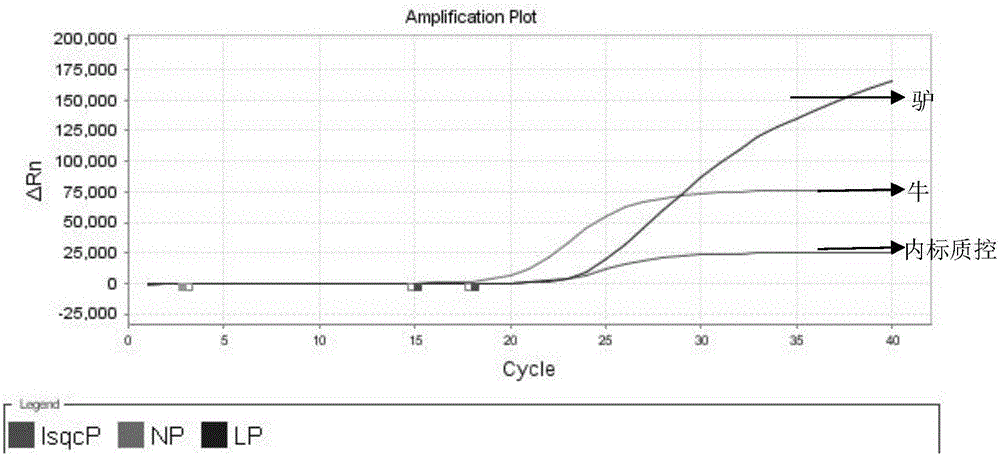Nest-type fluorescent PCR detecting primer, probe composition and kit for donkey material and bovine-derived material in donkey-hide gelatin, detecting method and application
A technology for detecting primers and bovine origin, which is applied in biochemical equipment and methods, recombinant DNA technology, and microbial measurement/inspection, etc. High degree of destructiveness, improved detection sensitivity, and improved amplification efficiency
- Summary
- Abstract
- Description
- Claims
- Application Information
AI Technical Summary
Problems solved by technology
Method used
Image
Examples
Embodiment 1
[0079] DNA extraction based on donkey-hide gelatin samples: using the method disclosed in the patent 201410317118.7 (a kit for quickly extracting DNA from donkey-hide gelatin and its extraction method), the steps will not be repeated, and the purity of the extracted genomic DNA is determined by ultraviolet spectrophotometer and concentration. Determination of OD 260 / OD 280 The values are all about 1.8-1.9, and the concentration is above 10ng / μl, indicating that the DNA is of high purity and moderate concentration, which meets the requirements of PCR amplification. .
[0080] 1. Selection of target genes and design of primers: Compared with the genome, the copy number of mitochondria in tissues is higher, and the degree of damage of donkey-hide gelatin after deep processing is relatively small, so the mitochondrial 16SrDNA gene is preferred. The outer primers and inner primers are designed for donkey and cattle, and the amplified fragments are small, making it easier for ...
Embodiment 2
[0085] Example 2 Kit Specificity Verification
[0086]Using the detection kit provided by the present invention, the genomic DNA is extracted from animal skins or fresh tissues such as cattle, pigs, horses, donkeys, camels, yaks, goats, sheep, rabbits, fish, chickens, ducks, minks and foxes as templates, Perform multiple nested real-time fluorescent PCR detection according to the above method to verify the specificity of this kit. The test results are shown in Table 3. Only the genomic DNA of donkey and cow was detected, and the rest of the animal-derived DNA was not detected, indicating that the detection method of this kit has good specificity.
[0087] Table 3 specificity verification
[0088]
[0089]
Embodiment 3
[0090] Embodiment 3 Sensitivity experiment
[0091] Quantify donkey and bovine genomic DNA to 5×10 -2 ng / μl, 5pg / μl and 0.5pg / μl, 0.05pg / μl, 0.005pg / μl each PCR reaction were respectively added different concentrations of donkey and cow DNA as a template, the addition amount was 2μl, that is, the DNA content was 0.1ng, 0.01ng, 1pg, 0.1pg, 0.01pg, amplified according to the above PCR system and detection method, see the results Figure 4 with Figure 5 , as can be seen from the figure, the detection limit of the present invention is 0.1pg, and the detection sensitivity reaches the picogram level, which is 1000 times higher than other detection sensitivities.
PUM
 Login to View More
Login to View More Abstract
Description
Claims
Application Information
 Login to View More
Login to View More - R&D
- Intellectual Property
- Life Sciences
- Materials
- Tech Scout
- Unparalleled Data Quality
- Higher Quality Content
- 60% Fewer Hallucinations
Browse by: Latest US Patents, China's latest patents, Technical Efficacy Thesaurus, Application Domain, Technology Topic, Popular Technical Reports.
© 2025 PatSnap. All rights reserved.Legal|Privacy policy|Modern Slavery Act Transparency Statement|Sitemap|About US| Contact US: help@patsnap.com



